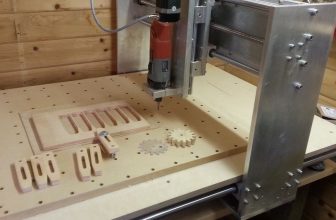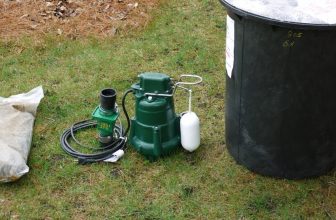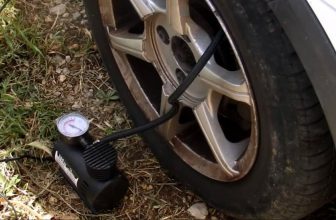Baseboard heaters, especially the ones installed directly along the baseboard, can be economical sources of heat because the homeowner is heating the one room in their house they need heat. And most of them on the market nowadays are easy-to-install and are safe to operate. These devices also have the benefit of being quiet and being completely user adjustable, so they’re convenient as well. In order to get a model that will serve their home well, however, homeowners are advised to do their research and buy the best baseboard heaters possible. With that goal in mind, I’ve decided to list ten models that I feel are the best baseboard heaters, just to save the user a little bit of research time. Below, you’ll find my top ten picks in ascending order.
10. Cadet Electric 120-Volt 500-Watt (2F500W-1W)
This Cadet model is designed for user’s who want a heater that’s inexpensive, is easy-to-install and provides quiet operation. It’s made of steel, so that it is durable during normal operations, and has a powder-coated paint that provides a nice white premium finish. It’s approximately 30-inches wide, 2.5-inches deep and 6.75-inches high and has a pre-fabricated case with holes at 1-inch intervals for easy installation. It’s an ideal unit for bedrooms and uses convection to circulate air throughout the room. It’s a 500-watt unit with one heat setting.
9. Lasko Silent Heating Unit

This inexpensive convection heater delivers some of the features that users look for in a heater that sits along their baseboard. It’s silent, thanks to it using convection heat to circulate the warm air, has a digital display with a thermostat that can be adjusted from 60-degrees to 85-degrees Fahrenheit and has an auto-off timer that can turn the unit off in an hour or in eight hours, depending upon how the user sets it. This model is 39.76-inches long, has a depth of approximately 8.98-inches, a height of 5.5-inches and weighs approximately 13-pounds. It’s also a unit that plugs into a grounded outlet and doesn’t need to be wired into the wall.
8. King 1000-Watt (4K1210BW)
With a back-wire design that can be wired at either end, this heater is designed to be easily installed and to provide a worry-free source of heat. It has a quiet operation because it uses convection heat to provide warmth to a room and can heat up a space of up to 175-square feet. It has a crush-proof aluminum element, a baked enamel finish and has a high-temperature safety shutoff feature which makes it both durable and safe. The only downside with this unit is that it requires a thermostat to be used and that’s sold-separately from this unit. Otherwise, it’s a good heater that would work all in a number of different homes.
7. Marley Qmark HBB504
While this unit doesn’t come with a thermostat and the consumer has to buy one in order to use it, once equipped this unit provides a nice, gentle convection heat that’s quiet and can heat up to 150-square feet of room. It has a high-quality element that is designed to not only provide the necessary heat but also to be quite durable as well. This 500-watt unit is 28-inches long and weighs approximately 10-pounds. Overall, this unit is a good unit for anyone looking to implement zone heating into their house or simply need to heat a room they couldn’t heat otherwise.
6. Cadet Manufacturing 1000-Watt (05534)
Designed to be installed underneath windows and away from furniture and electrical outlets, this heat by Cadet Manufacturing is a simple and convenient solution for heating most rooms. While it doesn’t come with a thermostat and that has to be bought separately, the user can choose from a number of different models available. This product also doesn’t plug into an outlet but instead hardwired directly into the wall. This durable heater is constructed from steel and has a beautiful powder coat surface that’s attractive in just about any room. All in all, it’s a unit that will adequately heat a 10-foot by 20-foot room.
5. Heat Wave 1,000-Watt (EB98937)
This 1,000-watt portable electric convection heater plugs into a standard grounded outlet and has two separate heat settings, a low-setting, and a high-setting. It can easily provide supplemental heat to a room up to 400-square feet in size and has an internal tip-over safety switch that turns the unit off automatically when it’s knocked over. Since it uses convection heating and doesn’t have a fan, it operates very quietly. It’s approximately 25.2-inches by 5.2-inches by 8.7-inches and is black, so it should fit into the decor of just about any room.
4. Cadet Manufacturing 750-Watt (05532)
This 750-watt baseboard unit is constructed from 25-gauge steel, has a 20-gauge junction box with ground and has a beautiful powder-coat finish on it. All of this not only makes it quite durable but also quite attractive and it can installed in just about any room in the house. While a thermostat has to be purchased separately in order to use this unit, once so equipped it’s capable of providing enough heat for a 10-by-20-foot room. This unit simply has to be hardwired into a wall, away from furniture and electrical outlets, and it will provide quiet, convection heat while it’s on.
3. Fahrenheat 1500-Watt (PLF1504)
This hardwired unit is designed out of steel and has a contemporary style and a beautiful white finish that should be welcome in just about any home. It has a patented heating element which allows efficient and quiet transfer of warm air and a thermal cutoff which shuts the heater down if it becomes blocked. This unit is approximately 70-inches long, 2.9-inches thick and about 8.4-inches tall. This unit is also UL listed, so it’s safe to operate when it’s been professionally installed. Overall, it’s a heater that should provide the service and the value most people are looking for in one of these heaters.
2. Fahrenheat 1,000-Watt (PLF1004)
This heating unit can easily be placed into any bedroom, study or living room because it has an attractive contemporary style and a beautiful off-white finish. This unit is equipped with a heating element which gives it the ability to heat just about any 10-by-20 foot room and is UL listed for safety. It also has a thermal cutoff which shuts the unit down if it should become blocked and overheat. This 1000-watt unit is ideal for zone heating or for simply heating that one room in the house that can’t be heated by other methods and should provide many years of use.
1. Cadet Manufacturing 1500-Watt (09956)
This UL-listed heater is approximately 72.3-inches long, 7-inches high and 4-inches deep and is manufactured using 25-gauge steel. It’s equipped with a 20-gauge junction box with a ground, and the entire unit is powder coated for durability. Manufactured in the U.S., this 1500-watt unit is designed to exacting standards and can be used for zone heating. This unit requires a thermostat, which the consumer has to purchase separately, and needs to be hardwired in order to be used. However, it’s a high-quality unit that should provide years of heat and do so without being overly expensive.
A Guide To Baseboard Heaters
Now that everyone knows just how handy baseboard heaters are to a home, it’s now time to turn our attention to buying the best baseboard heaters possible. And that’s not always an easy prospect for many people. That’s because there are dozens of different models available and these brands are available in a wide multitude of different sizes and power ratings. Trying to choose the right one for a home can be enough to make many consumers want to pull out their hair.
Fortunately, there’s an easy way to buy a new baseboard heater. All the consumer has to do is to figure out the size and wattage of the heater that they’re going to need, and then think about a few optional features. Doing that will allow them to find the best one for their needs quite easily. To facilitate that process, we decided to write this guide that will provide all of our readers with all the information they need to make an informed decision. Before we do that, however, we think it’s a good idea to go over some basic information about baseboard heaters.
How Do Baseboard Heaters Work?
Baseboard heaters work by a process known as thermal resistance. Inside of most heaters is usually a coil that heats up when electricity passes through it, although there are models that are filled with a fluid that heats metal fins that then radiate into the room. Either way, the heater needs electricity to power them and that electricity can be delivered in one of two different ways. The baseboard heater can either be hard-wired into the home’s electrical grid, or they can plug into a standard 120-volt outlet. The one that people are going to want to use depends on how much they want to pay to install it or how portable they want the heater to be.
Hard-wired heaters have to be professionally installed and as our readers can probably guess, they aren’t portable. Once they’re installed in a room that’s where they’re going to stay unless the homeowner is willing to hire another professional electrician to install into another room. Heaters that use a 120-volt outlet, however, are portable and can easily be moved from one room to another. And since these heaters only plug into an outlet, most people can install the heater themselves.
Choosing The Correct Baseboard Heater Wattage
Now that we understand how baseboard heaters work, it’s time to figure out how powerful a heater is needed for a home. As a general rule, most rooms require at least 5-watts of additional electric heating for every square foot of room space. For example, if a person has a 20×10-foot room, then they have a total of 200 square feet of room space and therefore need a heater that’s capable of supplying at least 1,000-watts of power. In this hypothetical case, the consumer can either choose to purchase a 1,000-watt baseboard heater or use several smaller ones to achieve the heating they so desire.
Of course, the above is only for rooms that need supplemental heat and are serviced by a central furnace. If the room doesn’t have heating ducts, like a front porch or sunroom, then the consumer will have to use on or more heaters to achieve the same effect. They will probably have to figure 10-watts of electric heating for such rooms per-square-foot. That means that a 10×10-foot room is going to need at least 1,000-watts of heating and a 20×10-foot room is going to need at least 2,000-watts of electrical heating, which will have to be supplied by several units.
Make Sure The Heater Is Safe
The next thing to consider is just how safe the unit is. Although most baseboard heaters are UL-listed and have built-in safety features, that doesn’t mean that all of them do. At the very minimum, a heater should have a thermal shut-off that turns the unit off if it gets too hot. A good baseboard heater also should have some type of fuse that will protect the unit from power-surges or brownouts as well.
Other Features To Consider
Just by following the above recommendations, the consumer will be capable of buying the best baseboard heater available. Especially if they use these recommendations to choose a model from our top ten list. However, there are a few other features that the consumer might want to consider when they’re buying a new heater. The following features aren’t necessary for a baseboard heater to have, but they can ensure that they’re easier to use and more functional.
- Built-In Electronic Thermostat
- Powder-Coated or Baked Enamel Finish
- Crush-Proof Aluminum Element














